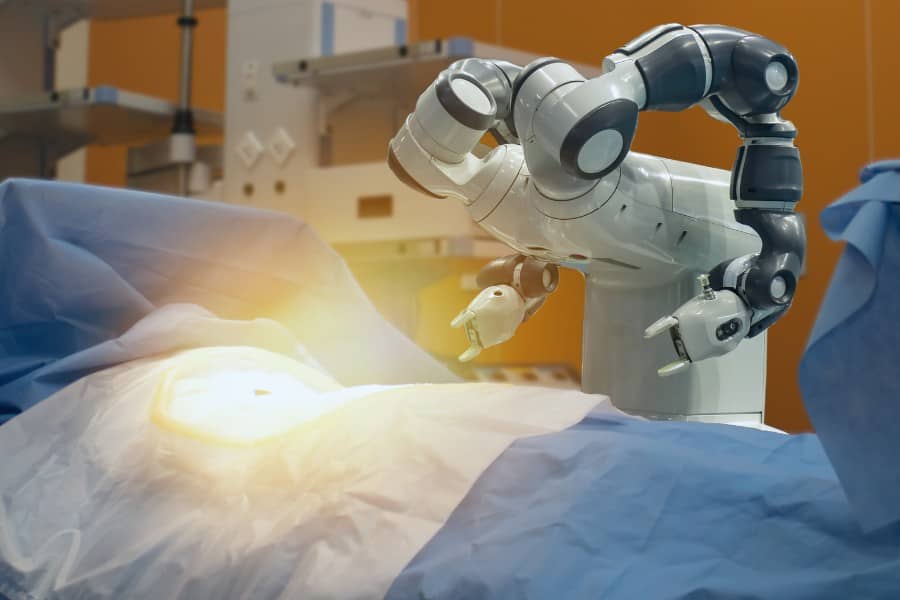
In recent years, robotic knee replacement surgeries have gained widespread recognition for their precision and potential to improve patient outcomes. If you’re considering this advanced procedure to regain mobility and reduce knee pain, it’s essential to understand how Medicare covers robotic knee replacement. This guide will walk you through the essentials, from eligibility and coverage to the benefits of choosing this innovative approach under Medicare.
Robotic Knee Replacement: A Technological Advancement

Robotic knee replacement, often performed with systems like Mako, represents a significant leap forward in orthopedic surgery. These advanced technologies provide orthopedic surgeons with unparalleled precision, enhancing the accuracy of the procedure and potentially leading to quicker recovery times and improved joint function.
Eligibility for Robotic Knee Replacement under Medicare

Determining whether you meet the eligibility criteria for robotic knee replacement is crucial. Medicare typically covers knee replacement surgeries when they are considered medically necessary. If your knee condition has progressed to a point where conservative treatments are no longer effective, you may be a candidate for the procedure.
The Benefits of Choosing Robotic Knee Replacement under Medicare

Opting for robotic knee replacement under Medicare can offer several advantages:
Enhanced Precision
Robotic systems help surgeons achieve remarkable precision during the procedure, potentially leading to a more accurate fit of the prosthetic components.
Quicker Recovery
Robotic total knee replacement is almost always performed at an outpatient surgery center. You go home the same day. Recovery is thought to be faster with robotic knee replacement compared to traditional manual knee replacement surgery.
Improved Joint Function
The advanced technology used in robotic knee replacement can result in better joint function and reduced pain post-surgery.
Navigating the Decision-Making Process

Choosing robotic knee replacement is a significant decision involving medical and financial considerations. Here are some essential steps to guide you through the process:
Consult with Your Healthcare Provider
Discuss your knee condition and treatment options with your orthopedic surgeon. They can help determine if robotic knee replacement is right for you.
Review Your Medicare Plan
Understand the coverage and out-of-pocket costs associated with your specific Medicare plan. Be prepared to ask questions and seek clarification from your insurance provider.
Explore the Surgical Team
Consider the expertise and experience of the surgical team, as this can significantly impact your surgical outcome.
Direct Care with Dr. Tarlow: A Unique Advantage

Choosing Dr. Tarlow as your orthopedic surgeon offers a distinct advantage. While Medicare covers facility fees (ASC or Hospital), Anesthesiologist fees, Physical Therapist services, medications, and most imaging studies, when you select Dr. Tarlow as your surgeon, you deal directly with your care provider. This means that treatment decisions remain in your hands, eliminating the need for third-party involvement and bringing back the doctor-patient relationship.
The Financial Aspect: What to Expect
Dr. Tarlow’s professional fee covers the cost of the replacement surgery and one year of professional follow-up care. However, it’s essential to note that Medicare does not cover this fee, and you will pay Dr. Tarlow directly for his services. The fee for your knee replacement procedure may vary depending on the type of procedure, ranging from $9,000 to $12,000.
Dr. Tarlow’s priority is ensuring his patients receive the necessary care, regardless of financial constraints. If you find the direct pay fee challenging, Dr. Tarlow will reduce his professional fee to accommodate your medical needs.
Frequently Asked Questions (FAQs)
Q1: Is robotic knee replacement covered by Medicare Advantage plans?
Yes, many Medicare Advantage plans cover robotic knee replacement. However, the extent of coverage and out-of-pocket costs may vary depending on your specific plan and the provider and surgeon you choose to work with. It’s advisable to check with your plan provider for details.
Q2: Are there age restrictions for Medicare coverage of robotic knee replacement?
Medicare eligibility is primarily based on medical necessity rather than age. Medicare coverage may be available regardless of age if your healthcare provider deems robotic knee replacement medically necessary.
Ready to Explore Robotic Knee Replacement with Medicare?
If you’re interested in the possibilities of robotic knee replacement and how it aligns with your Medicare coverage, don’t hesitate to contact Dr. Tarlow’s office. Our dedicated team is here to assist you in understanding your options, answering your questions, and guiding you toward the best decision for your knee health and well-being. Take the first step towards improved mobility and comfort by scheduling a consultation with Dr. Tarlow today. Your journey to a pain-free and active lifestyle begins here.
















































